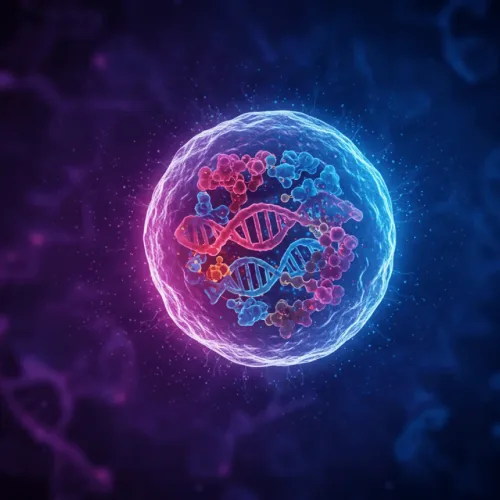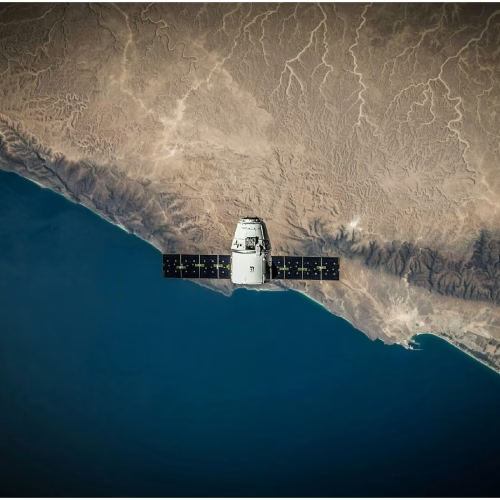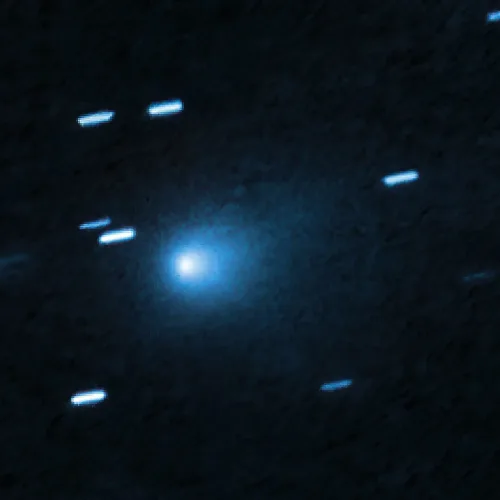Global efforts to address climate change is only possible by achieving net-zero carbon emissions. Our main goal is to reduce our greenhouse gas emissions to nearly zero. If there are any remaining emissions left, we will balance them with removal technologies. In addition, we are moving towards renewable energy solutions. It is now the appropriate moment to emphasize the significance of nuclear physics. This is an important step on the way to a carbon-free future. Nuclear science can help us to unlock a clean energy source to supplement more current renewable systems.
The Basics of Nuclear Physics
Nuclear physics studies the basic building blocks of matter, and that is the atomic nuclei. We have the power to accomplish amazing things. We are capable of performing nuclear fission reactions. Nuclear fusion is another incredible technology, and there is much more to learn from the nuclei.
- Nuclear Fission: This reaction breaks the heavy atoms, like uranium, to release a lot of energy and so make nuclear reactors work.
- Nuclear Fusion: In this reaction, two light atomic nuclei combines and thus form a heavy nucleus. During this process, a huge amount of energy is released.
These are really cool technologies because they don’t release any carbon, and they work really well and are very reliable. Nuclear energy allows us to obtain large quantities of electricity and enough to make little difference to our environment.

Nuclear Energy and Carbon-Free Power Generation
The direct release of carbon emissions is not a fact with nuclear power plants that generate electricity. The reliance on solar and wind is important. However, it requires weather-dependent power sources. Bridge these gaps in the form of consistent energy given by nuclear energy. The service runs 24/7, providing a reliable and constant power source.
Nuclear Energy vs. Renewables
| Feature | Nuclear Energy | Renewable Energy |
|---|---|---|
| Carbon Emissions | Near zero | Near zero |
| Reliability | High | Variable |
| Energy Density | Very high | Moderate |
| Land Use | Low | High |
The nuclear fuel cycle also reduces emissions over time, from mining uranium to waste storage, maintaining a low-carbon footprint.
Advances in Nuclear Technology for Sustainable Solution
Advancements in nuclear technology pave the way for safer, more efficient energy systems:
- Small Modular Reactors (SMRs): Structures offer flexibility and reduced cost while improving safety within compact design.
- Generation IV Reactors: It is designed to have higher efficiency and lower waste production.
- Fusion Technology: It is still in early experimentation. Fusion, however, has the almost limitless, pure, clean energy with little waste. It is one of the leading contenders to solve our world’s energy crisis.
These innovations have a significant impact on nuclear power. One of the way to meet sustainability targets globally. They also have plenty of applications worth practicing.
Carbon Capture and Storage Technology

Nuclear physics are also applied beyond power generation to help solve carbon capture and storage (CCS) solutions. Isotopic tracing allows us to monitor and optimize carbon dioxide sequestration in underground reservoirs. Coupled with CCS, even the very least environmental impact of nuclear facilities can be significantly reduced further.
Key Features of Carbon Capture and Storage Technology:
- Capture Phase:
- Direct capture has traditionally used mechanical technologies, including filtration or chemical absorption. In addition, other advanced CO₂ separation technologies capture CO₂ at emission sources, like power plants.
- It is ideal for coupling CO₂ capture systems to stable operations of nuclear power plants.
- Transport Phase:
- CO₂ is compressed and transported by pipeline or ship to sites for storage.
- For this stage, nuclear facilities are useful complements, as they can use isotopic analysis. It is ascertained in this analysis that the transported CO2 is in a secure state.
- Storage Phase:
- Securely trapped CO₂ is injected in deep geological formations, such as depleted oil fields or saline aquifers.
- The long-term monitoring of these sites to ensure safe and efficient carbon sequestration is supported by nuclear science.
The integration of CCS with nuclear operations can greatly reduce the nuclear lifecycle emissions. It can then become a cornerstone for combating global climate change.
Tackling Challenges in Nuclear Adoption
Nuclear energy has a lot of benefits, but there are problems. While advances in safety protocols have occurred, public perception is still formed by once-upon-a-time Chernobyl and Fukushima-like events. A challenge exists with high initial costs and nuclear waste management. But waste recycling and long-term solutions for storing the waste are mitigating them. Over time, these obstacles can be overcome with continued investment and transparency.
Partnering Nuclear with Renewables
This means that the use of nuclear power together with renewable energy increases clean energy potential. For example:
- Hydrogen Production: Hydrogen can be produced by nuclear reactors, a clean fuel for transportation and industry.
- Grid Stability: Nuclear plants can provide grid stability in the event of peaks of renewable supply fluctuations.
- Energy Storage: Nuclear energy surplus can be used to charge large scale storage systems during demand peaks.

A Global Commitment to Nuclear Energy
France and Sweden are countries that show how nuclear power could provide net-zero decarbonization. Nuclear energy contributes to nearly 70% of France’s electricity and helps absorb nearly 80% of its greenhouse gases. But there are regulatory and political obstacles to global adoption. This international collaboration is an essential step in moving nuclear’s role in the energy mix to an expanded one. The framework for such policies is something like the Paris Agreement.
Nuclear Physics and Net-Zero Carbon Emissions
Future work in nuclear science may yet provide further benefits to clean energy. A bright future for nuclear power is determined by advances with fusion reactors, advanced reactor designs, and better safety measures. These innovations help us get to net-zero carbon emissions. They also keep energy secure through the next couple of generations.
I think what progress is progress towards freedom. It is not measured by equipment, income, and living standards. Albert Einstein once said. “Energy is a function of progress. The kind you bring to your chosen challenge is not so much that kind of thing, depending on the quantity.” With nuclear energy, you can do good. We can convert it and rewrite the course of the future of planet Earth.




